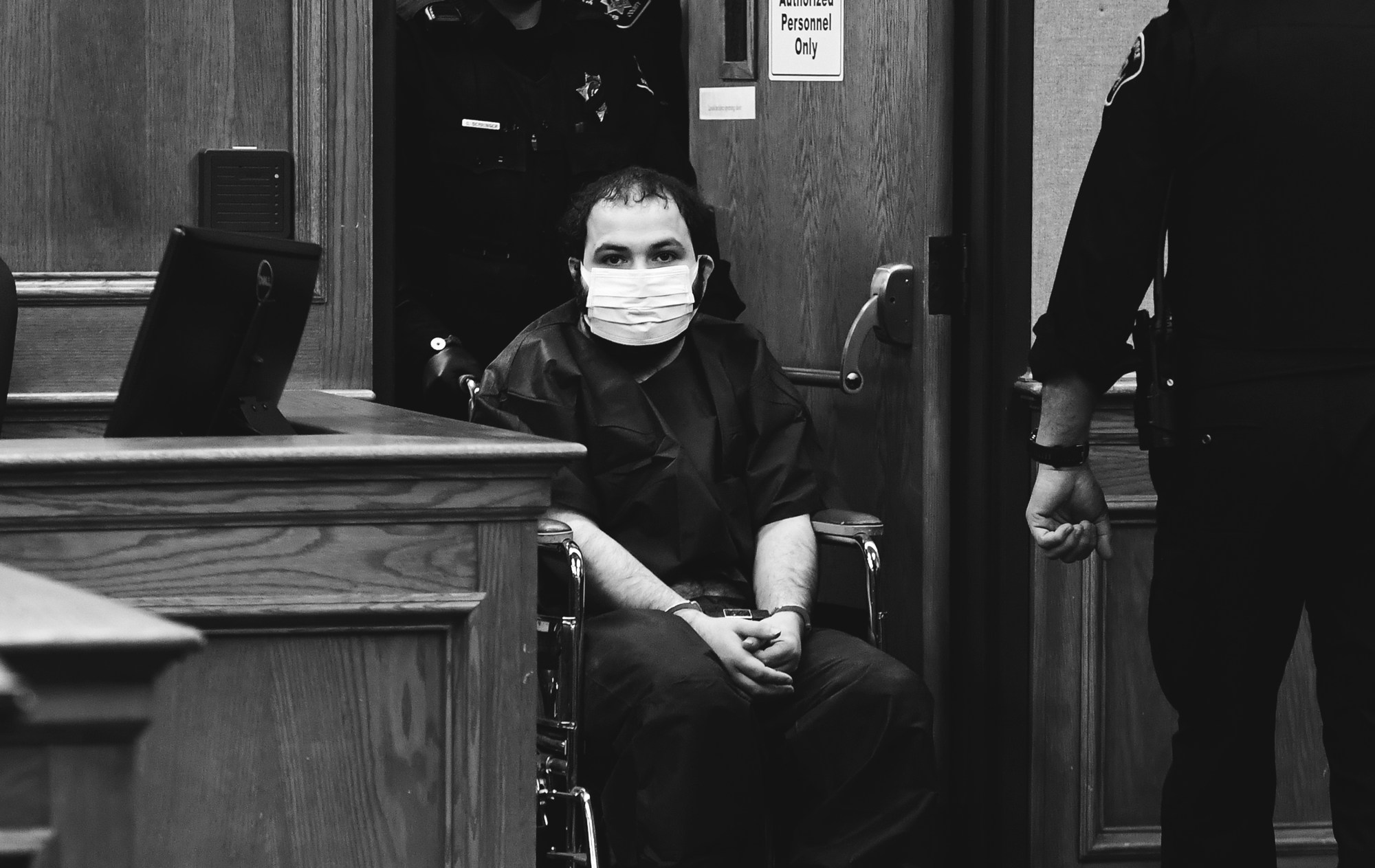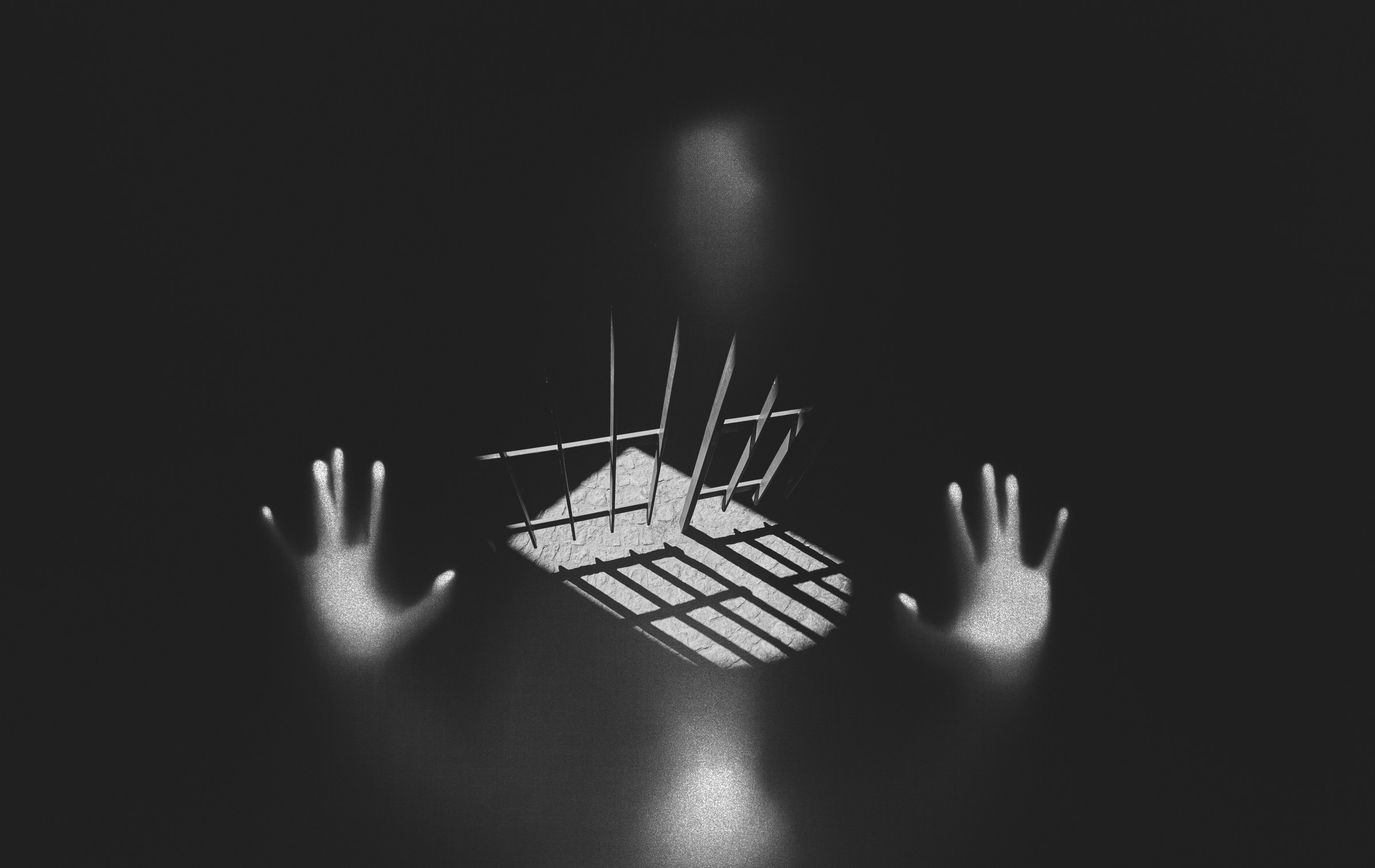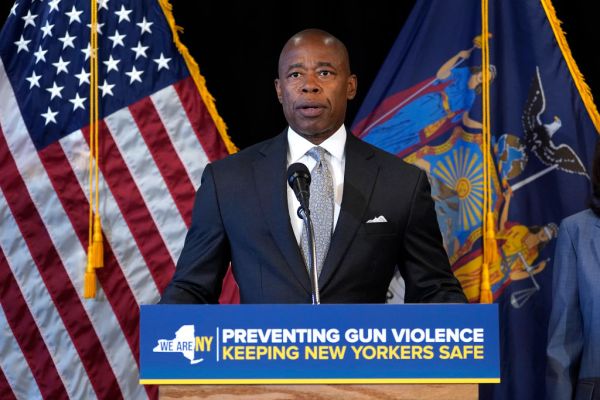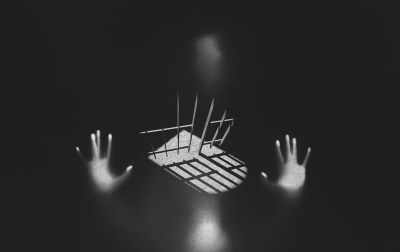Just before 2:30 p.m. on the afternoon of March 22, 2021, Ahmad Al Aliwi Alissa pulled into the parking lot of a supermarket in Boulder, Colorado, got out of his car, turned toward the van parked next to him, and shot the man inside. He spotted another man fleeing across the parking lot, shot at him until he fell, then walked over to his body and shot him several more times. He claimed a third victim at the supermarket entrance, stepped into the store, and immediately shot an employee. Over the next several minutes, Alissa stalked the aisles. He shot five more people—according to one police witness, he preferred moving targets—before police entered the store around 2:37 p.m. Officers advanced on Alissa, who fired two shots. One missed. The other struck a 51-year-old officer in the head, killing him.
The police retreated. Over the next 20 minutes, they set up an emergency medical area, smashed the front windows of the store, and exchanged sporadic gunfire with Alissa, who reportedly chuckled and screamed “this is fun” throughout the encounter. He also began pushing stacks of handheld shopping baskets around aisles. “It was the weirdest thing,” one witness who was still hiding inside the store later told the Denver Post. “He was pushing them in the same direction. One stack after another.”
Around 3 p.m., officers outside ordered Alissa to surrender. At 3:22 p.m., a SWAT team entered the store. They found Alissa near the pharmacy, wearing only a pair of shorts and bleeding from a gunshot wound to his right leg. “I surrender,” he said. “I’m naked.” He would ultimately be charged with 115 separate crimes, including 10 counts of first-degree murder.
Ahmad Alissa, it turned out, was a textbook schizophrenic. He’d had all the typical early symptoms. He had begun to withdraw as a teenager. His hygiene had deteriorated. He’d struggled in school, then in work, in a way inconsistent with his prior promise. By his early 20s, he was largely unrecognizable to those around him. He’d heard voices and suffered delusions.
Court-ordered doctors eventually delivered a report concluding that Alissa was mentally incompetent to stand trial. About two years would pass before Alissa was deemed sufficiently stable to even enter a plea of not guilty by reason of insanity. The defense argued that Ahmad’s massacre was the result of a completely irresistible compulsion brought on by his disease: He sincerely believed that the only way to make the voices stop was to kill, and he was too far gone to resist the compulsion.
The prosecution didn’t dispute the diagnosis, only that it mattered. Alissa had planned his crime. He’d purchased a gun, chosen a location, and followed through on his plans. These were all clear demonstrations of intent, of the capacity to know right from wrong and therefore of legal sanity. As the prosecutor told jurors during closing arguments: In a court of law, “schizophrenia does not mean insane.” The jury only deliberated for about six hours before returning their verdict: guilty on 10 counts of first-degree murder; guilty on 45 other counts, too. The court sentenced Alissa to 10 consecutive sentences of life in prison, plus 1,334 years.
Beyond its body count, Alissa’s case was not unusual among failed insanity defenses in the United States. It has long been a staple of our laws and of our moral intuition that madness might mitigate responsibility for anti-social acts. But the details—what madness, what acts, what mitigations—both in the law and in our lives have never been more muddled or contested.
“That madness excuses the actions it explains is a notion that can be traced far back in European history,” wrote the historian Nigel Walker, but “its origin is hidden in the mists of the Bosporus.” For most of human history, the dangerously (and often just unsettlingly) mad were left to languish in jails, exiled, chained to pillars, or simply put to death. “The classical Greeks and Roman recognized mental disorders … as accounting for conduct that infringed on law or custom,” Walker writes, but even if this were understood as a form of divine punishment, it was not “a substitute for human justice.” Seneca the Younger argued that although we may judge their moral status differently, mad criminals must be punished like the sane ones in order to protect the common good; in Laws, Plato wrote that if “anyone be insane, let him not be seen openly in the town, but let his kinsfolk watch over him as best they may,”—and if they failed, then they could be punished with a fine.
Our earliest record of a Western mad defense appears in the Corpus Juris Civilis, the uniform code of jurisprudence promulgated around 533 A.D. by the Byzantine emperor Justinian. The code itself cites Herennius Modestinus, renowned Roman jurist, who 300 years earlier argued that even “if a madman commit homicide” he cannot be punished by Roman law “because he is excused by the misfortune of his fate.” This was among the first suggestions that the appropriate legal response to criminal insanity could be mercy, however qualified.
Once established, the mad defense lurched forward through the legal and moral institutions of the West. “If anyone through sickness or some such cause fall into such a passion as deprives him of the use of reason, his act is rendered wholly involuntary, and he is entirely excused from sin,” wrote Thomas Aquinas in his Summa Theologiae; real guilt required deliberate human wickedness, and the crimes of the mad were sheer beastliness—far less imperiling to the soul. In the 12th century legal code that would form the basis of English Common Law, King Henry II held that “insane persons and evildoers of a like sort should be guarded and treated with mercy by their parents.” Even convicted madmen were often recommended for pardon, or given lighter punishments in light of their afflictions. Then, in the 16th century, another novelty brought the mad defense in line with the reasoning familiar to us now: Juries in England began to find defendants not guilty by reason of their madness—not culpable in the ordinary sense at all.
In 1843, a Scottish woodturner named Daniel M’Naghten began to believe that the Tories were conspiring against his life. Determined to strike first, he traveled to England, stalking Prime Minister Robert Peel for several days before ultimately murdering his secretary, Edward Drummond, in error. When he was found not guilty by reason of insanity, public backlash was swift. In response, the House of Lords established a standard still familiar to us today. Called the M’Naghten Rule, it imposed the requirement that in order to be found not guilty by reason of insanity, it was not enough for the defendant to be psychotic, no matter how spectacularly. Instead, they are presumed sane unless it could be shown that they did not know what they were doing when they committed their crime, or that if they did know, they truly did not know it was wrong.
Three years later, the M’Naghten Rule came to the United States, when future Secretary of State William Seward took up the case of William Freeman, a young man accused of murdering a family in upstate New York. Freeman had exhibited clear signs of mental impairment since being repeatedly and brutally beaten during an earlier stint in prison, but existing law addressed only questions of competence: If a defendant was found competent, they were not generally entitled to introduce mitigating psychiatric evidence. Deemed competent, Freeman was found guilty and sentenced to death, but Seward appealed to the New York Supreme Court, which ordered a new trial and the admission of psychiatric evidence. The case enshrined the M’Naghten Rule in American case law. But it was too late for William Freeman, who died in prison before his new trial could begin.
Over the next century, courts and legislatures turned their attention to defining and often liberalizing insanity defense law. First, several states adopted the “irresistible impulse” provision, allowing defendants who knew what they were doing and knew that it was wrong to still be found not guilty by reason of insanity if they were unable to resist the compulsion to act. In 1954, the U.S. Court of Appeals for the District of Columbia established what came to be known as the Durham Rule: A defendant was not criminally responsible “if his unlawful act was the product of mental disease or mental defect.” This lighter standard proved too lenient for many: Courts and state legislatures across the country rejected the Durham test outright, and in 1976, the Durham decision was overturned by the Supreme Court. It was largely replaced by an American Law Institute formulation, first developed in 1961, that has come to be known as the “model penal code” test. It held that a defendant cannot be found responsible if “as a result of mental disease or defect, he lacks substantial capacity either to appreciate the criminality of his conduct or to confirm his conduct to the requirements of the law,” excepting those whose sole manifestation of mental illness was the crime itself. While narrower than the Durham rule, the model penal code test still carved a substantial space for the insane in American law.
This period of legal liberalization coincided with significant upheavals in the situation of the American mad in general. In 1855, the first federally operated psychiatric hospital, St. Elizabeths, opened in Washington, D.C. Influenced by the moral treatment movement in Europe and championed by asylum activist Dorthea Dix, new public mental hospitals were constructed across the United States. By 1955, more than 500,000 Americans lived in asylums. But this would prove the apex of the American mental hospital system. In the late 1940s, widespread reports about the horrors taking place in psychiatric hospitals—the electroshocks, lobotomies, involuntary sterilizations, the removal of patients’ teeth—began to scandalize the American public. By the middle of the 20th century, the regulatory approval of effective psychiatric medication provided the first scalable means of actually treating, and often releasing, patients. The process now known as “deinstitutionalization,” presaged in 1963 by the federal Community Mental Health Act, kicked off in earnest in 1967, when then-California Gov. Ronald Reagan signed the Lanterman-Petris-Short Act. What began in California quickly spread to the other states, spurred on by the converging interests of conservative budget hawks, anti-psychiatry libertarians, and liberals concerned by the plight of the insane. In 1981, then-President Ronald Reagan effectively ended federal funding for mental health care entirely.
While narrower than the Durham rule, the model penal code test still carved a substantial space for the insane in American law.
Deinstitutionalization in general occasioned deinstitutionalization among the criminally insane: Throughout the 1960s and ’70s, appellate courts began rejecting state laws that allowed those found not guilty by reason of insanity to face indefinite hospitalization. Instead, states would be required to regularly review the status of their forensic hospital inmates and release those who were deemed stable. But here, the public response was more ambivalent. In some trials, juries otherwise inclined to find a defendant not guilty by reason of insanity (NGRI) began to return guilty verdicts out of fear that an NGRI would result in a dangerous person being released back into their community. In the wider political world, many began to believe that the insanity defense was too lenient: too easy to attain, carrying too light of punishments, too reliant on the theories of psychiatrists who had by that time fallen further and further out of public favor. In the aftermath of deinstitutionalization, a 1986 Cornell University study found that more than 50 percent of Americans believed that psychiatrists called to testify in an insanity defense would “say anything,” if they are paid enough, and 90 percent agreed that the insanity defense let “too many guilty people go free.” Most significantly, the study found that Americans estimated that nearly 40 percent of those charged with crimes attempt an insanity plea, and that of those attempts, around 36 percent are successful: In short, that roughly 10 percent of all people charged with a crime in the United States are found legally insane.
In the American imagination, to plead not guilty by reason of insanity is to engage in a cynical ploy. While some defendants may truly be crazy, most are malingerers, fakers wailing about “the voices” when they realize the police have them dead to rights. Formed in the late 20th century, this impression has crystallized since, abetted by movies and television, prosecutors and politicians, and psychiatric skepticism across the political spectrum. It is why, 50 years after the Durham rule was thrown out, one commenter on a CBS report on the Ahmad Alissa case summed up a common sentiment in such cases thusly: “They can’t all keep requesting mental health…like come tf ON!”
This impression is a fantasy. More accurately, it is a delusion: a fixed belief not amenable to evidence or reason. In the 1960s and 1970s, when mad defenses were most easily attainable and liberally defined, New York State saw an average of around 25 successful insanity pleas per year. Today, almost all insanity pleas are reached by pretrial agreement, and fewer than 1 percent of all defendants plead insanity at trial. Of those, only a quarter of 1 percent are successful, a total of .0025 percent of all criminal defendants. In the entire United States, this works out to an average of 30 successful insanity defenses per year. For all the “liberalization” of the 1960s and ’70s, the mad defense is today as vanishingly rare as it has ever been.
The backslide toward the current era began almost the moment that deinstitutionalization reached its zenith. In 1981, mere months after Reagan returned all remaining federal mental health funds back to the states, he was shot outside the Hilton Hotel in Washington, D.C., by the schizophrenic John Hinckley Jr. In 1982, after two unsuccessful suicide attempts in prison, Hinckley pleaded insanity, and the jury heard days of testimony from psychiatrists arguing that Hinckley was legally insane. He was acquitted and remanded to St. Elizabeths Hospital for treatment, where he would remain until 2016.
The parallels to the M’Naghten case a century prior went beyond those of a lunatic with a gun failing to assassinate a head of state. Almost immediately, public outrage fueled legislative reaction. Hinckley had “gotten away with it”; the insanity defense, said Sen. Dan Quayle, “pampered criminals,” and let them kill “with impunity.” In 1984, Reagan signed the Insanity Defense Reform Act (IDRA). The most significant consequence of this law was transforming federal insanity pleas into an affirmative defense—meaning, the burden now fell on the defendant to demonstrate their madness, rather than on the state to demonstrate their sanity. But the act also removed the primary means by which a defendant might make such a case: It prohibited expert witnesses from testifying to whether or not the defendant met the legal definition of insanity. Now, they could only offer a diagnosis, and speak to the defendant’s capacities. It was up to the jury to decide if this testimony constituted “clear and convincing evidence” that a defendant was legally insane.
In 1986, the 11th Circuit Court of Appeals upheld the constitutionality of the IDRA, paving the way for the states to follow suit. By 2023, only 11 states still placed the burden of proof on the state when prosecuting mentally ill defendants. Many abolished the mens rea element of mad defenses entirely, now allowing defendants to plead insanity only when they could prove they were totally incapable of intending to commit the criminal act at all. When the prosecutor in Ahmad Alissa’s trial told the jury that “schizophrenic does not mean insane,” he was accurately representing the default position of the majority of the existing insanity defense statutes in the United States. Legal insanity requires many things of a defendant. Almost none of them correspond to the symptoms of any existing mental illness.
In 2020, the United States Supreme Court ruled in Kahler v. Kansas that the Eighth and 14th Amendments did not, as prior consensus had held, require the possibility of any insanity defense in criminal law. Six states have since replaced NGRIs with “guilty but mentally ill” verdicts that typically result in ordinary prison sentences; one, Kansas, has abolished the mad defense entirely. As the number of insanity defenses has declined over the past several years, the number of competency hearings has climbed dramatically—it is far easier, it seems, to have a defendant found incompetent to stand trial than to establish legal insanity.
Even those 30 defendants who succeed in their insanity pleas each year are liable to find themselves in forensic psychiatric hospitals, often for far longer than the maximum sentence they might have served in prison had they been convicted. These hospitals are not soft or sterile places. Kirby Forensic Psychiatric Center, located on Wards Island in New York City’s East River and housing many of New York’s NGRI detainees, sees hundreds of assaults per year despite housing only around 200 patients. A 2013 study found that roughly a third of all American forensic psychiatric patients were involved in at least one violent incident during their hospitalization. In his 2014 book Behind the Gates of Gomorrah—the telling name that author Stephen Seagar gives to California’s Napa State Hospital, where he worked as a psychiatrist—Seagar writes of being called to testify during hearings for patients seeking release from the hospital. Despite being required by law to only assess whether or not a patient is still mentally ill at the time of their hearing, Seagar recalls a case where, as he waited to testify, he considered “what [he] thought was fair, what [he] felt was [his] responsibility to [the patient], to [himself], and to the people outside the hospital.” Though he believed that the patient in question is entirely sane, he testified that the patient was suffering from bipolar disorder with psychotic features and thus wasn’t yet stable enough to leave the forensic hospital. Asked to give evidence of this diagnosis, he cited an incident in which the patient jokingly blamed “the voices” for a fight in the hospital. The patient remained incarcerated.
Even release from a forensic psychiatric ward does not mean a return to free life. In 2021, the Marshall Project, a journalism nonprofit focused on the criminal justice system, reported on the case of Venus Moore, a middle-aged California woman who was found not guilty by reason of insanity of a 2001 stabbing and released from the hospital in 2012, serving four more years than the statutory seven-year maximum for her crime. Once out, she was placed on forensic conditional release and “required … to live locked inside a care home for seniors.” She “was not allowed to drive, work, open a bank account, travel or date.” Despite adjusting more rapidly and more fully than expected, Moore’s supervision theoretically allowed for permanent restrictions. “Everybody’s familiar with probation and parole,” attorney Jean Matulis told the Marshall Project. “This is all-inclusive, complete control of every moment of the person’s waking life.” Moore is not an unusual case among modern mad defendants once their “treatment” is allegedly over.
This is the reality of the insanity defense in the United States. Fewer than 1 percent of defendants offer insanity pleas in felony cases; almost all of them come about by pre-trial agreement. Of those who offer it as a contested defense at trial, more than 90 percent fail. Those who manage to secure an NGRI are remanded to special hospitals that are frequently more dangerous than prisons and may remain there longer than a sane prisoner can be sentenced for the same crime. If they manage to get out, they may spend the rest of their lives unable to do much of anything that rates above the baseline fact of being alive and allowed to leave the hospital.

The past decade has featured an incredible revival in debates over American criminal justice. After the tough-on-crime politics of the 1990s, and the Homeland Security state of the 2000s, the 2010s and 2020s have seen a new wave of critical attention on police brutality, police shootings, prosecutorial misconduct, prison conditions, minimum sentencing guidelines, capital punishment—on the entire premise of law enforcement. There has been a near-simultaneous explosion in American interest in the broad, euphemistic topic of “mental health.” Formal diagnosis is on the rise. Self-diagnosis is on the rise. Athletes have begun openly discussing their “struggles with depression”; newspapers have given relentless coverage to the “mental health crisis” in America. Therapy has become so thoroughly destigmatized that it is offered via phone app and advertised on television. The language of the clinic has become the default idiom of huge swaths of social media; “mental health influencer” is a lucrative career option. Despite these developments, scant attention has been paid to the mad defense, or to how close we are to ending it.
I do not believe that this is mainly a result of misconceptions over the rate of NGRIs or the fate of those who secure them. I do not even believe that most Americans, faced with the reality of our system, would see much wrong. The mad defense is only a formal manifestation of an ancient dilemma, the same dilemma recognized by Seneca and Plato and Modestinus, and one we are no closer than they were to solving: that the mad present a problem for our moral intuitions, and we do not know, and perhaps are not even comfortable discussing, what we ought to make of them.
Or of us. I began to deteriorate as a teenager. I became difficult, alternatively exuberant and pushy and suspicious and aggressive and utterly withdrawn. I was hard to be around, hard to talk to; my schoolwork slipped, followed by my hygiene. I couldn’t make eye contact but I could talk, without interruption, for hours. At 17, my family committed me to a wilderness inpatient program for “troubled teens,” where I was a diagnosed with a host of disorders (anxiety, depression, suicidal ideation, paranoid tendencies, defiance) but eventually released without a medication plan. I quit my follow-up therapy as soon as I graduated high school. I managed college, spurred on by what would later be recognized as manic episodes, but I became more and more erratic. I could be cruel. I screamed at people for no reason. I made threats. I stripped naked and threw objects at the wall. During my first year in college, I became persuaded that a scarf I had received from a friend back home possessed mystical powers. When I accidentally left that scarf at the apartment of a stranger with whom I’d had a one-night stand and she was vague about when I might be able to get it back, I broke in while she wasn’t home, terrifying her roommate and tearing apart her closet until I found it. During my second year, after weeks of mounting agitation and an impulsive decision to end a new relationship, I was driving through Chicago when I heard the voice of God command me to crash my car and die. I obliged, slamming into the concrete retaining wall of an offramp, which threw my car back into traffic where I struck another car. Nobody was injured, but a few feet further up and the collision would have killed the other driver.
A year after I graduated college, living on the north side of Chicago, I found a small lump in my neck. It was cancer. Or some other disease. I was being poisoned. There was a demon trying to kill me. I saw half a dozen doctors, all of whom told me I was fine because they were in on the plot. I threw up on my bathroom floor and never cleaned it. I began to fixate on one of my roommates. I was sure that he was watching me through tiny cameras hidden all over the apartment. Relationships and friendships continued to collapse, and during one long night I sat in the dark at my kitchen table with a knife in my hand deciding whether or not I should stab my roommate in his sleep before he saw something he didn’t like on the surveillance cameras and decided to kill me first. The sun came up before I could make a decision. I put the knife down and left. Living mainly with my girlfriend of the time, I began eating only one meal per day. I was so afraid I could barely speak. During a trip out of town, alone in the apartment of an old acquaintance, I attempted to remove the lump from my neck with a bread knife, and then a toothpick, and then my hands.
Finally, one of the many doctors I had seen compelled me to see a psychiatrist. I was diagnosed with bipolar disorder Type 1 with psychotic features, then schizoaffective disorder of the bipolar type, and put on psychiatric medication, which I have taken for over a decade now. Although this has not spared me occasional relapses, I have been lucky. My medication works, and I have been stable for years. Although I have sometimes still found myself transported against my will to a 72-hour hold in a mental hospital, I have never been charged with a crime, so I have never had to contemplate the possibility of pleading not guilty by reason of insanity.
Legal insanity requires many things of a defendant. Almost none of them correspond to the symptoms of any existing mental illness.
I am a far more common case than the lunatics who find themselves before a jury. Like most of us, I am not likely to commit murder, but I remain difficult, particularly to those who care about me. To know somebody who suffers a serious psychiatric disorder, much less to love one, is to be exposed to a constant low-grade burn of unpredictable trouble. We wear people out—hurt them, mostly in small ways. Our loved ones want to be understanding; most do not want to be angry with us for being sick. But this high-mindedness only goes so far. Despite my stability, I still suffer many of the negative symptoms of a psychotic disorder. A recent cognitive exam found, not for the first time, that I am in the 11th percentile for executive function, and as a result I am tremendously disorganized. I forget to bathe. I forget where to put things away. I leave spaces that I inhabit in a state of chaos. My wife, with whom I share a small apartment, is aware that I do these things not because I am a lazy or indifferent slob but because there is something wrong with my brain. Still: It exhausts her. And it frustrates her. And she can’t help getting angry with me because no matter the cause, I am making her life more difficult, and nothing breeds resentment so readily as being hurt and then being told you’re not allowed to hate it, because if you do then you’re a bigot.
The lunatics most Americans encounter are somewhere between the truly dangerous and the merely exhausting. They’re generally the unmedicated or undermedicated schizophrenics living on city streets, turned into a kind of outsize specter by the tabloid press, but who are nonetheless unsettling, sometimes threatening, sometimes unpredictable or frightening. There are many ways we might address this crisis, from the cruel and punitive to the compassionate and costly, but the preferred method of a certain style of activist is simply lecturing the public about how bad and embarrassing and frankly ableist they are for expressing discomfort with the situation. But doing this too easily hardens the public’s hearts, pushing them into the arms of the other cheap solution on offer in our political culture: let these people disappear, and don’t ask too many questions.
It's easy to resent strangers. Most of us, whether or not we are willing to admit it, reserve our empathy and understanding for family and other people close to us. When unsympathetic strangers plead insanity, we typically don’t care. We either don’t believe them, or we say, well, an explanation is not an excuse. We are not yet so enlightened that we no longer desire the cathartic satisfaction of a punishment dealt to the deserving, and we have not yet become so rational that we do not desire that satisfaction even when the object of our wrath may not deserve it. Insanity is too abstract. It is not satisfying to take revenge on a diagnosis. An entry in the DSM-V cannot squirm and suffer and know it had this coming.
There is a common cliché that madness is a kind of foreign invader, that the real you is the good you who lives beneath the terrifying distortions of “the disease.” I have never believed that. I once had a therapist who encouraged me to forgive myself for the friendships and relationships and jobs I have destroyed as a consequence of mania or psychosis; it is, as he said, not my fault. But this is the moral reasoning of a child. The real me is a lunatic; the real me is unfit to live among other people. The medicated me, the stable me, is better, but it is artificial, sustained by psychopharmacology and therapeutic intervention. Insanity is a product of the mind and I am my mind as much as I am my hair or my fingers or my eyes. Years ago, I sat down with an old friend who was sick of what the vagaries of my condition meant for her. I explained my clinical history, my symptoms, my medication, my prospects. I received liberal sympathy and understanding. But, my friend asked, how can I be sure you won’t go off your medication again? How can I be sure it’ll keep working? And after a pause, I said: Well, I guess you can’t.
These two impulses—one toward understanding, the other toward resentment; one inclined toward mercy and one terrified that only punishment can protect us from harm—cannot be neatly reconciled. The result is often pain and sometimes tragedy. What does the world owe the mad, and what do the mad owe the world? We have been pondering this question for millennia and found no answers, and we have to live in the meantime. Now, we rarely even ponder anymore. In the middle of the 20th century, a trans-ideological and bipartisan alliance converged around what to do with the American insane: The result was deinstitutionalization. But its longer-term fruit has been a new kind of crisis, no longer hidden in sadistic, costly institutions, but visible on the streets. Now, a new political alliance has converged to ignore, obscure, and rationalize away the moral dilemma insanity poses to our courts and to our lives.
What is strange is how this new alliance has reversed the political intuitions of the alliance that spurred deinstitutionalization. When psychiatric institutions in general were at stake, reactionaries were eager to grasp the same horn as Seneca or Plato and say that the good of society at large outweighs any special consideration for the insane. They ought to be corralled, locked up, forcibly medicated if need be; if this cannot happen, then it is not unreasonable for sane Americans to take matters into their own hands, sometimes literally. But for as often as reactionaries blame a “mental health crisis” for an often-illusory rise in urban crime rates, the conservative press has never encountered a specific criminal defendant that they did not accuse of being a malingerer. They would banish the mad defense, or preempt it: Let the criminals go to prison, and let the mad in their millions, indictment or not, go back to the asylums, so long as it costs the taxpayer as close as possible to nothing.

For most American liberals and leftists, meanwhile, deinstitutionalization remains a triumph. Historically committed to mercy and still notionally committed to “mad rights” as an identity category, they are as unwilling to call for the end of insanity defenses as they are for a return to the asylum at large. Instead, they have invented a new way to avoid the dilemma: simply pretending that mental illness never results in antisocial behavior, much less violent crime. Confronted with examples, they endlessly repeat the cliché that actually, somebody with mental illness is more likely to be the victim of a violent crime than the perpetrator, a claim that is true only because the mad are victimized so frequently that it dwarfs their more modest propensity toward criminality. When the behavior is sub-criminal, the cliché becomes Well I have mental illness, and I’ve never engaged in this specific bad behavior. This is an exercise in respectability politics: a desire to insulate the merely depressed or anxious or ADHD-addled young professional from the stigma of being associated with the more troubling insane. Those lunatics, whether privately destructive or pleading insanity in a formal trial, are just too inconvenient to the cause. A great deal of the contemporary “mad movement” has been directed toward fighting stigma, toward normalizing psychiatric treatment, toward making it possible for stable lunatics like me to live and work free of the assumption that we are one bad day away from committing a massacre. But the existence of actual mad defendants guilty of “stigma”-inducing crimes is embarrassing.
The truth is that insanity is largely a matter of luck. Madness itself is bad luck: the wrong genes, the wrong circumstances, the wrong life. Access to treatment is a matter of luck: of when you were born, where you were born, to what kind of culture, with what kind of money. How responsive you are to medication is a matter of luck; whether you believe you need the medication at all is luck too. If you have the misfortune to develop one of the more spectacular forms of madness, then it is up to luck how that madness manifests. At trial, Ahmad Alissa’s father testified that the family did not seek psychiatric help for their son because they believed he was possessed by a spirit, and in any case his father was afraid of people thinking of him as the man with a crazy son. “It’s shameful in our culture,” he said. Those of us whose madness has not resulted in atrocity or tragedy are not possessed of better souls or sense than those who find themselves confined to forensic psychiatric hospitals. We’re simply lucky. This is what is most unsettling about insanity at bottom: It is arbitrary. It is immune to reason and sometimes to medication. We are better than the ancients in that we are willing to pity the mad. But our pity does not always provoke our mercy, particularly when we are exhausted or offended or troubled or afraid; particularly when we have good reason.
At Ahmad Alissa’s sentencing, the brother of one of his victims said: “To the person that’s done this, we hope that you suffer for the rest of your life … I hope this haunts the defendant until the end of time. [He] deserves the absolute worst.” Who can blame him? We do not know what to do with the hard moral dilemma of insanity. Perhaps we fear what we might conclude if we did, what it would reveal about the limits of our own enlightenment, or the human cost of our need for justice. We would rather not know. And so, Ahmad Alissa will spend the rest of his life in prison. And 30 lucky lunatics per year will spend an indefinite period surveilled by doctors and the state. And many of us will continue on, in one way or another, on medication or off of it, stable or not, housed and employed or homeless and desperate, nobody quite certain if we must be defended, or must be defended from, or both, or neither, just hoping that our luck holds—or turns.






Please note that we at The Dispatch hold ourselves, our work, and our commenters to a higher standard than other places on the internet. We welcome comments that foster genuine debate or discussion—including comments critical of us or our work—but responses that include ad hominem attacks on fellow Dispatch members or are intended to stoke fear and anger may be moderated.
With your membership, you only have the ability to comment on The Morning Dispatch articles. Consider upgrading to join the conversation everywhere.